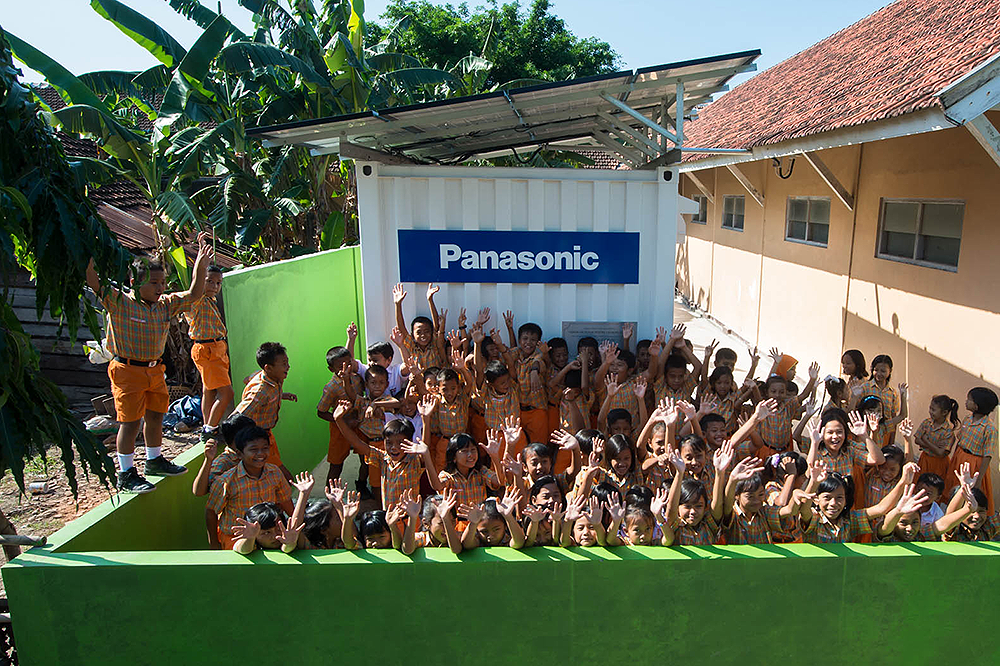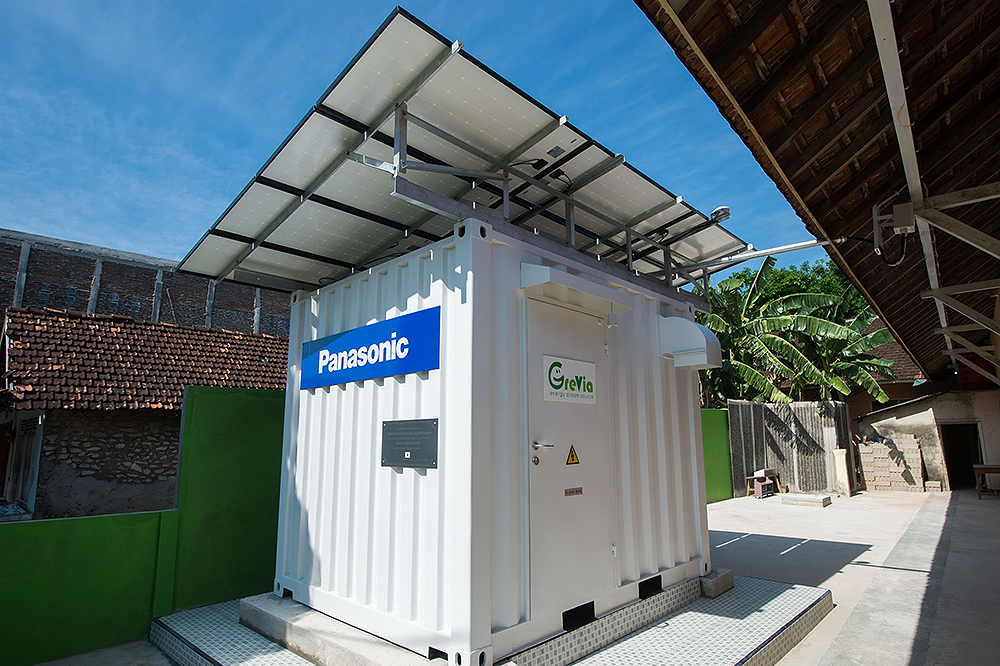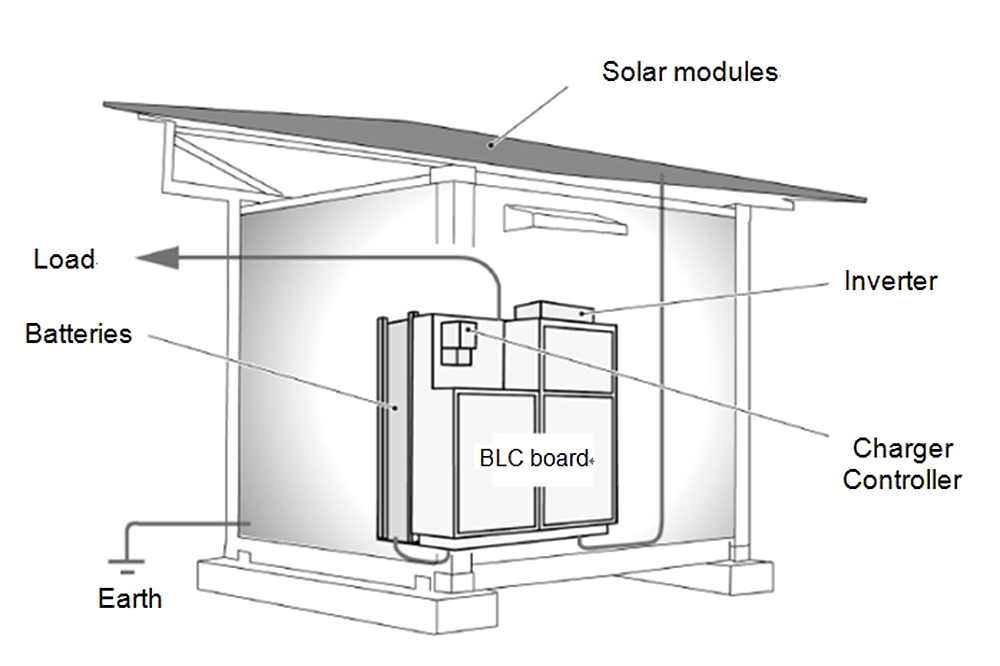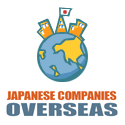Panasonic provide Stand-Alone Solar Power Container for support educational development to elementary school in Indonesian island

Stand-Alone Solar Power “Container” Supports Educational Development on Remote Indonesian Island
Date: Jul 22, 2014
Source: Panasonic Corporation
Indonesia consists of approximately 13,000 islands, many of which lack access to electricity due to the difficulty building large power plants and running power lines in the distinctive geography. Panasonic chose Karimun Jawa Island, an island located not far from Java Island, near Jepara District, as the recipient of our installation of the Power Supply Container, an easy to set up and transport electrical supply system, in aims to make life better for the people living there.
Panasonic announced it installed the “Power Supply Container,” a stand-alone photovoltaic power package that it developed, to the National Elementary School Karimun Jawa 01 in Karimun Jawa Island, Jepara District, Central Jawa Province, Indonesia. On July 17, 2014, a handover ceremony was held jointly with Koperasi Pundih Artah, a project partner; and the Institute of Business and Economic Democracy Foundation (IBEKA), an Indonesian NGO.
In total, 250 people attended the ceremony, including Governor KH. Ahmad Marzuki of Jepara District, Minister Yoshiko Kijima of the Embassy of Japan in Indonesia, Representative Director Iskandar Budisaroso Kuntoadji of IBEKA, and the Executive Director Tri Mumpuni as guests of honor; and teachers and students. The guests of honor delivered congratulatory speeches; Mrs. Kijima told that she felt really happy about regional contributions through support by a Japanese company.
People in Karimun Jawa Island can only use electricity at night from 6pm-6am, utilizing diesel generators. As no power is available during daytime, their crucial activities are interfered including commercial activities and certain education curriculum. In particular the opportunity to utilize electronic devices, such as fans, computers, or even lighting during the day ultimately hamper the economical development of the island. To solve this social issue, Koperasi Pundih Artah, which receives Grant Assistance for Grassroots Human Security, IBEKA and Panasonic have launched a project for improving the educational environment, by utilizing the Power Supply Container, under the cooperation of Jepara District and the Embassy of Japan in Indonesia.
During school hours, the Power Supply Container gives support to improve the educational environment; children can use lighting fixtures, ceiling fans and audiovisual educational materials through personal computers and TVs. When there are no classes, the electricity is sold to nearby areas through a management association of the Power Supply Container to contribute to activation of the regional community and improve the regional electricity infrastructure.
Panasonic made efforts to provide the Power Supply Container and to offer IBEKA with technical assistance in this project. Meanwhile, IBEKA is giving support for establishing management associations in Karimun Jawa for independent operation of power supplies as well as provides training and supports for their operation, management and maintenance to achieve a sustainable power supply in Karimun Jawa.
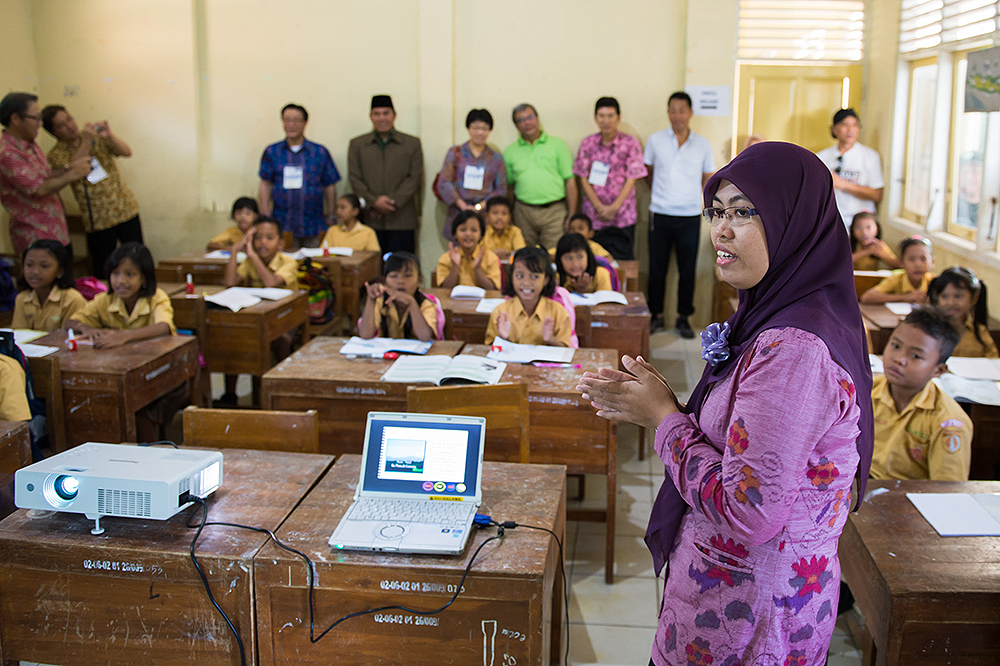
With electricity from the Power Supply Container, the classroom was lit up and the ceiling fan started. Children are so interested in learning with multimedia devices for the first time.
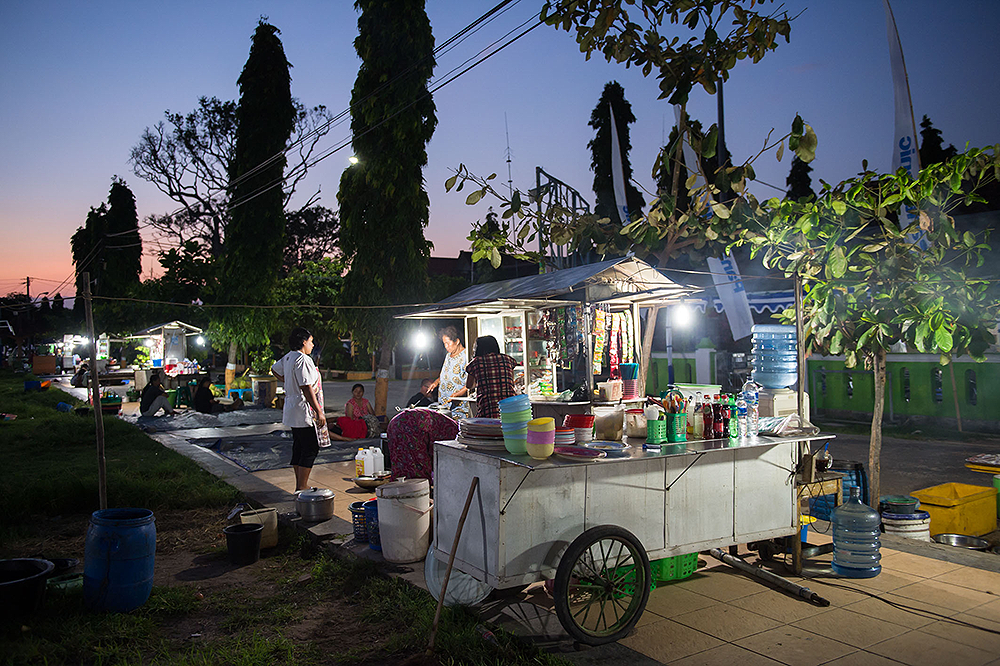
Food stalls on the nearby street. Surplus electricity will be sold to them for raising funds for the maintenance of the container.
A representative in Panasonic Eco Solutions Company, Mr. Susumu Iida comments about the project to install the unit to an elementary school.”Classes go from around 7 a.m. to noon on school days. With the Power Supply Container, the school will have electricity for lights and fans. The additional installation of computers and other equipment will also help improve class learning quality. We hope that these things will improve learning efficiency significantly.”
Panasonic will further strive to extend a stable power supply to areas without electricity and backup power sources to places that suffer frequent power blackouts, and provide improved social support, including emergency power sources in the event of disasters. The Company will strive to provide a more rich and comfortable lifestyle in Indonesia and other emerging countries with problems in establishing electrical infrastructure.
Outline of the Power Supply Container
The Power Supply Container is equipped with twelve Panasonic “HIT(R)240” solar modules which have high conversion efficiency and can generate approximately 3 kW of electricity. It can also provide stored power from 24 built-in lead-acid storage batteries (17.2 kWh as total).
| Product Name | Power Supply Container (stand-alone photovoltaic power package) |
| Container | Container for marine transportation |
| Dimensions (mm) 4780 (W) × 3452 (L) × 3486 (H) [Container: 3029 (W) × 2438 (L) × 2591 (H)] |
|
| Mass | Approx. 3000 kg |
| Maximum inverter output | 3 kW |
| Total storage capacity | 17.2 kWh |
| Solar modules | Monocrystalline hybrid solar module HIT(R) x 12 |
| Control board | Power Supply Control Unit |
| Storage batteries | 12V/60Ah Deep cycle valve-regulated lead-acid battery x 24 |
Features of the Power Supply Container
- Reliable quality performance
The container was designed and developed for mass production to assure stable power supply. PT. Panasonic Gobel ES Manufacturing Indonesia will manufacture the Power Supply Containers and exercise quality management. Going forward, the company will promote transfer of assessment technology in Japan into Indonesia and aim to further lower the price of the containers through mass production. - Easy and quick assembly for portability and expansion
The container is designed to require no expert construction work onsite. This allows general electrical contractors to install the Power Supply Container easily and quickly, helping to promote widespread use of the system on the various islands of Indonesia. If connected equipment and devices are increased, containers can be added to further expand their functions. Because the system is in container form, it can be easily moved from place to place if needed. - Utilization of Panasonic accumulated technologies
The container uses Panasonic HIT(R) solar modules to provide power efficiently, even in a restricted space. The Company’s newly developed Power Supply Control Unit as the energy management system to monitor the remaining electricity level of the lead-acid batteries and controls supply and demand, reducing deterioration of the batteries. This reduces the life-cycle cost and maintenance man-hours for the storage batteries.

